Par Romain d’Aspremont,
auteur de « Penser l’Homme nouveau : Pourquoi la droite perd la bataille des idées »
Ex: http://www.rage-culture.com
Si la droite perd, c’est qu’elle évolue au sein d’un logiciel chrétien. Les sociétés occidentales sont fondamentalement marquées par la morale chrétienne ; il n’est pas étonnant que l’idéologie gauchiste s’y épanouisse – et, sur le temps, ne cesse de gagner du terrain – tandis que les droitistes doivent perpétuellement batailler pour paraître fréquentables. C’est le principe même du Bien qui doit basculer de l’égalitarisme vers l’élitisme, et du pacifisme vers la compétition et la lutte.
 La seconde raison de la défaite perpétuelle de la droite, c’est son conservatisme. Les réaco-conservateurs assimilent trop souvent l’avenir à un déploiement inéluctable des forces progressistes. Ils en viennent à prendre l’objet (l’avenir) façonné par le sujet (la gauche) pour le sujet lui-même. Le futur étant devenu synonyme d’avancées « progressistes », l’unique remède ne pourrait être que son contraire – le passé – plutôt qu’un avenir alternatif. Or il y a là une forme de défaitisme, comme si la droite assimilait sa propre déconfiture, ratifiant le monopole de la gauche sur l’avenir. Puisque l’Histoire n’est qu’une longue série de victoires progressistes, c’est l’avenir lui-même qu’il faudrait brider, plutôt que les acteurs qui le façonnent. Ralentir le temps et sanctuariser certaines institutions apparaît alors comme la solution par défaut.
La seconde raison de la défaite perpétuelle de la droite, c’est son conservatisme. Les réaco-conservateurs assimilent trop souvent l’avenir à un déploiement inéluctable des forces progressistes. Ils en viennent à prendre l’objet (l’avenir) façonné par le sujet (la gauche) pour le sujet lui-même. Le futur étant devenu synonyme d’avancées « progressistes », l’unique remède ne pourrait être que son contraire – le passé – plutôt qu’un avenir alternatif. Or il y a là une forme de défaitisme, comme si la droite assimilait sa propre déconfiture, ratifiant le monopole de la gauche sur l’avenir. Puisque l’Histoire n’est qu’une longue série de victoires progressistes, c’est l’avenir lui-même qu’il faudrait brider, plutôt que les acteurs qui le façonnent. Ralentir le temps et sanctuariser certaines institutions apparaît alors comme la solution par défaut.
Cette analyse, plus ou moins consciente, est une variante de la croyance en un progrès linéaire : l’avenir n’est plus une irrésistible ascension, mais une lente décadence. Ainsi, tout en ridiculisant l’idée d’un « sens de l’Histoire », les réaco-conservateurs considèrent implicitement que le temps fait le jeu de la gauche. S’il leur arrive – du bout des lèvres – de se satisfaire d’une nouveauté, ils n’iront jamais jusqu’à batailler pour la faire advenir, non plus qu’ils ne mobiliseront leur énergie intellectuelle pour concevoir un nouveau « de droite ». Leurs forces sont toutes entières consacrées à faire l’éloge du passé.
Le progressisme au sens strict repose sur des postulats infirmés par l’Histoire. Le pacifiste et le jouisseur finissent toujours par se soumettre au guerrier. Mais le conservatisme lui-même n’en repose pas moins sur des présupposés erronés, car les projets d’Homme nouveau, loin de se réduire à des utopies illusoires, sont un des moteurs de l’Histoire.
La posture d’un Schopenhauer, qui écrit « le progrès, c’est là votre chimère, il est du rêve du XIXème siècle comme la résurrection des morts était celui du Xème, chaque âge a le sien », n’est plus tenable. La véritable erreur, c’est de croire que les chimères sont sans prise sur le réel – surtout quand ces chimères peuplent les cerveaux des élites. Chaque époque a sa conception particulière du progrès, et ceux qui se refusent à proposer la leur doivent renoncer à écrire l’Histoire. De même, Nietzsche peut bien déclarer que le Progrès est « une idée fausse », il n’empêche que sa philosophie du surhomme est progressiste – progressiste de droite.
Notre ennemi ne doit pas être le progressisme au sens large, mais uniquement le progressisme de gauche. Non pas l’idée de progrès, mais la direction que veulent lui faire prendre nos adversaires. Car « l’idée de progrès constitue moins une idéologie que la présupposition de toutes les idéologies, systèmes de représentations et de croyances proprement modernes ». C’est pourquoi la droite doit développer son propre progressisme, qui doit viser la réunification de l’Occident (plutôt que la défense des Etats-nations) et encourager l’évolution anthropologique (plutôt que sanctifier la tradition). Par définition, le futur a toujours raison du passé. Aussi, le duel du Passé et de l’Avenir doit s’effacer au profit d’un choc entre un avenir de gauche et un avenir de droite.
Notre progressisme doit promouvoir une exigence de dépassement, sur tous les plans, y compris moral. Cette morale sera « vitaliste » : valorisant tout ce qui élève l’espèce et combattant ce qui la bride, l’affaiblit et la mutile. Appliquée aux débats sociétaux qui suscitent le plus de crispations, son verdict sera différent de celui des réaco-conservateurs. Ainsi, la PMA et la GPA sont souhaitables dans la mesure où elles élèvent le capital biologique et intellectuel des Occidentaux (ingénierie génétique).

Romain d'Aspremont
Un progressisme de droite ne doit pas borner son horizon au domaine anthropologique (entreprise de création d’un homme nouveau) ; il doit l’étendre au domaine institutionnel et étatique. Faute de proposer une vision de l’Europe qui soit autre chose qu’un simple retour à l’ère gaullienne – « l’Europe des nations » – les souverainistes se privent du formidable potentiel mobilisateur propre à tout idéal nouveau. Philippe de Villiers explique que ceux qui ont affronté le traité de Maastricht ont cru combattre un super-État (une entité politique susceptible d’incarner une Europe-puissance, pesant en propre sur la scène internationale), pour ensuite découvrir que le projet européen n’a jamais été de bâtir les Etats-Unis d’Europe, mais de substituer l’économique (le marché) au politique.
En fait, les souverainistes ont bien fait de s’opposer à Maastricht, mais pour de mauvaises raisons. En effet, le dépassement des nations et l’unification de l’Europe ne sont pas des idées condamnables en soi ; elles méritent d’être évaluées à l’aune de l’idéal qui les porte. Le malheur n’est pas que l’Europe soit gouvernée par un « despotisme doux et éclairé » (Jacques Delors), mais que ce despotisme soit anti-européen dans l’âme. Or, par une ruse de l’Histoire, les Européistes nous ont offert le cadre institutionnel et administratif pouvant servir notre vision de l’Europe : plutôt que de détruire ces leviers de pouvoir, emparons-nous-en afin d’impulser une renaissance civilisationnelle, qui passe par la création des Etats-Unis d’Europe, puis des Etats-Unis d’Occident (Etats-Unis d’Amérique, Russie, Canada, Australie et Nouvelle-Zélande compris).
Les souverainistes ne jurent que par l’État-nation et le retour à l’ordre ancien. Dans de nombreux domaines (immigration, éducation, justice), ce retour est vital, mais il faut se rappeler que les États-nations sont eux-mêmes issus de l’effondrement de l’Empire romain christianisé. Ils sont la conséquence lointaine des invasions barbares du Ve siècle, et une fragmentation de l’unité politique de la chrétienté. Car enfin, l’âme européenne vaut plus que le respect tatillon de la souveraineté des États-nations. Ne confondons pas le moyen – les institutions – et la fin – la pérennité des cultures nationales et de la civilisation européenne. À ceux qui prétendent que cette dernière est un fantasme, et que seules existent les cultures nationales, qu’ils parcourent donc le monde et ils distingueront sans peine ce qui relève de la nuance (les différentes cultures européennes) de ce qui relève de la différence essentielle (les civilisations).
Notre projet doit être la restauration de l’Europe unie, plutôt que le combat acharné pour la pérennité de son éclatement. Il ne s’agit pas de pratiquer une fuite en avant vers le dépassement des États-nations mais, puisque ce dépassement se fera, avec ou sans nous, il nous faut en avoir la maîtrise. Trop longtemps, les défenseurs de l’âme européenne ont laissé aux européistes le monopole de l’idéal européen. Les souverainistes se cantonnent soit à une négation (NON à l’Europe fédérale), soit à une nostalgie gaulliste (OUI à l’Europe des nations). Il nous faut penser un horizon nouveau, sans quoi l’histoire du continent sera écrite par nos adversaires, notre rôle se limitant à celui de retardateur, grippant provisoirement l’engrenage de la déconstruction civilisationnelle.
L’Europe des nations, les souverainistes vous le répètent, c’est l’Europe du « bon sens ». Mais l’homme n’est pas qu’un être de raison. Pour Carl Gustav Jung, l’homme a un besoin de sacré. Mais il a également un besoin d’idéal et d’utopie. S’il est disposé à se sacrifier pour fonder une nation, il ne l’est plus quand il s’agit de la rafistoler. L’Europe des nations est un conservatisme ; il lui manque la force du nouveau. Or le Neuf est souvent nécessaire à la sauvegarde de l’Ancien.
Nous sommes tellement habitués à voir le pouvoir politique européen déconstruire notre civilisation et nos identités nationales, que nous réagissons avec hostilité à toute idée de pouvoir européen, que nous assimilons à l’idéologie remplaciste. Or, le lieu du pouvoir ne préjuge pas de son contenu ; à nous d’en édifier un qui œuvre à notre renaissance civilisationnelle.
Nietzsche écrit ainsi: « Ce qui m’importe […] c’est l’Europe unie. Pour tous les esprits vastes et profonds du siècle, la tâche où ils ont mis toute leur âme a été de préparer cette synthèse nouvelle et d’anticiper à titre d’essai l’« Européen » de l’avenir. Aux heures de faiblesse seulement, ou quand ils vieillissaient, ils retombaient dans les perspectives étroites de leurs patries ».
Nous vous conseillons de lire également « Pour un transhumanisme de Droite » du même auteur
Références :
1. F. Nietzsche, L’Antéchrist, § 4, Oeuvres philosophiques complètes, Paris, Gallimard, 1974, t. VIII, p. 162.
2. Pierre-André Taguieff, Les contre-réactionnaires, Le progressisme entre illusion et imposture, Denoël, 2007, p. 243.
3. Philippe de Villiers, Le moment est venu de dire ce que j’ai vu, Albin Michel, 2015.
4. Friedrich Nietzsche, La volonté de puissance, tome II, Gallimard. p. 293.




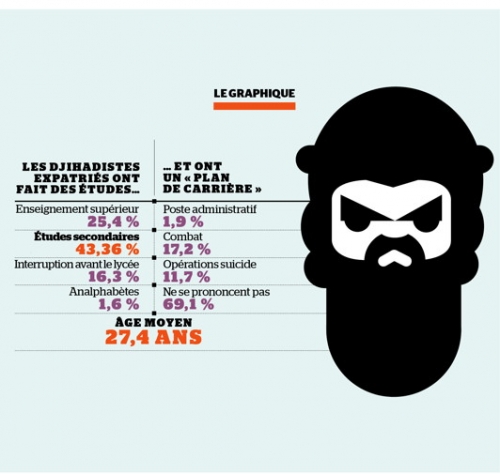
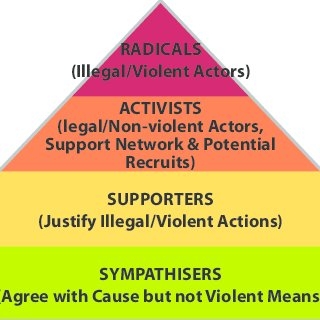



 del.icio.us
del.icio.us
 Digg
Digg

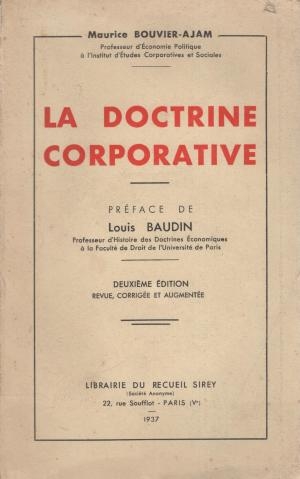 Les organisations professionnelles sont composées de représentants élus et de véritables experts désignés par l’État : elles renferment, en proportions à déterminer par une loi, des chefs d’entreprise, des cadres, des employés et des ouvriers, de l’industrie et de l’artisanat, de l’agriculture, de la pêche et des transports, des professions libérales et d’employés de l’État. Elles ont pour rôles de régler les conditions de travail et de rémunération, d’organiser la formation initiale des apprentis et la formation continue des travailleurs, voire de présider au regroupement des petites entreprises pour en accroître la rentabilité, économiser des matières premières et standardiser la production (Dauphin-Meunier, 1941 ; Denis, 1941 ; Bouvier-Ajam, 1943). C’est un régime particulièrement adapté à la gestion des crises économiques et sociales.
Les organisations professionnelles sont composées de représentants élus et de véritables experts désignés par l’État : elles renferment, en proportions à déterminer par une loi, des chefs d’entreprise, des cadres, des employés et des ouvriers, de l’industrie et de l’artisanat, de l’agriculture, de la pêche et des transports, des professions libérales et d’employés de l’État. Elles ont pour rôles de régler les conditions de travail et de rémunération, d’organiser la formation initiale des apprentis et la formation continue des travailleurs, voire de présider au regroupement des petites entreprises pour en accroître la rentabilité, économiser des matières premières et standardiser la production (Dauphin-Meunier, 1941 ; Denis, 1941 ; Bouvier-Ajam, 1943). C’est un régime particulièrement adapté à la gestion des crises économiques et sociales.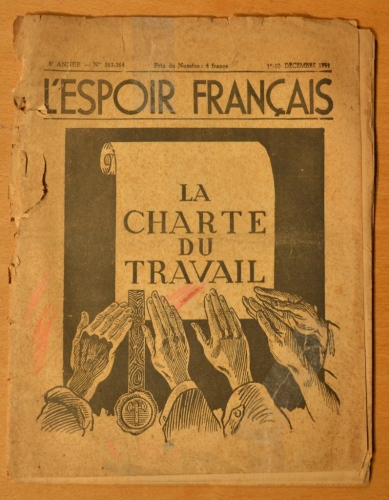
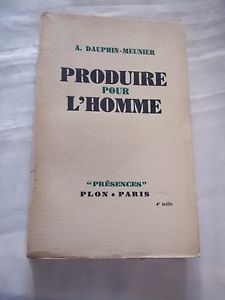 L’économie corporatiste fut la solution adoptée par les populistes du XXe siècle. Comme l’a très justement écrit Hilaire Belloc (in L’État servile, de 1912) : « Le contrôle de la production des richesses revient, en définitive, à contrôler la vie humaine ».
L’économie corporatiste fut la solution adoptée par les populistes du XXe siècle. Comme l’a très justement écrit Hilaire Belloc (in L’État servile, de 1912) : « Le contrôle de la production des richesses revient, en définitive, à contrôler la vie humaine ».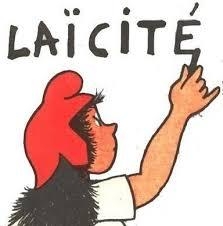


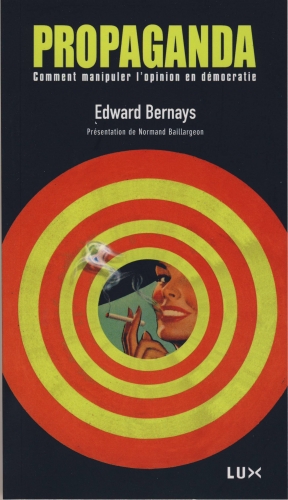 La publicité est évidemment toujours sous le soupçon. Dans un livre qui avait fait du bruit à l'époque, "la persuasion cachée" de 1957, Vance Packard révélait les stratégies des compagnies publicitaires qui truffaient leurs annonces de textes et images supposés agir sur nos motivations cachées en échappant à la censure du Moi.
La publicité est évidemment toujours sous le soupçon. Dans un livre qui avait fait du bruit à l'époque, "la persuasion cachée" de 1957, Vance Packard révélait les stratégies des compagnies publicitaires qui truffaient leurs annonces de textes et images supposés agir sur nos motivations cachées en échappant à la censure du Moi. 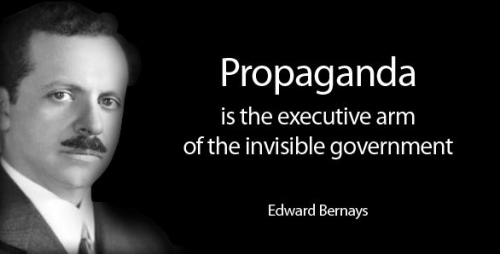
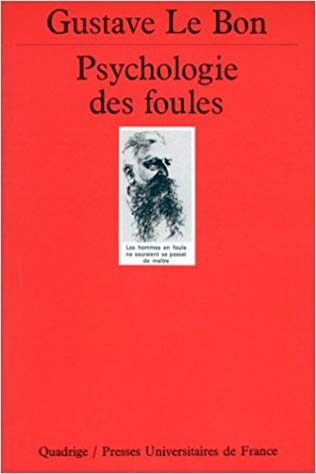 Mais que pensait vraiment Freud ?
Mais que pensait vraiment Freud ?
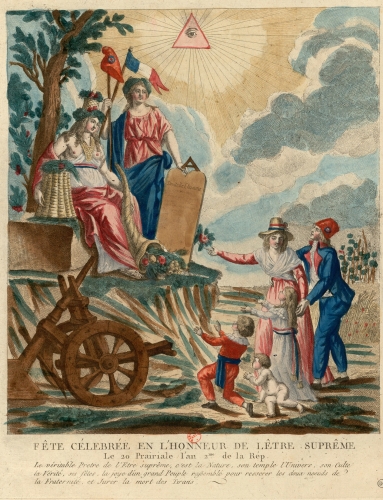


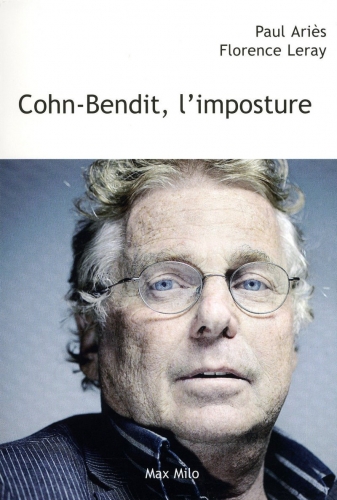

 ... Cette revue de détail nécessairement partielle et non limitative ne signifie en aucune façon qu’il existe, ou que va se créer un front vraiment “marxiste” contre le gauchisme-sociétal qu’on a tendance à assimiler au “marxisme culturel” pour le marier encore plus aisément à l’hypercapitalisme. (Leur “marxisme culturel” est un “marxisme de spectacle”, comme il y a la “société de spectacle” de Debord.) Seule importe cette position d'opposition très diverse à la passion fusionnelle capitalisme-gauchisme-sociétal, comme un socle continuel de critique, de mise en évidence et de dénonciation du simulacre capitalisme-gauchisme-sociétal.
... Cette revue de détail nécessairement partielle et non limitative ne signifie en aucune façon qu’il existe, ou que va se créer un front vraiment “marxiste” contre le gauchisme-sociétal qu’on a tendance à assimiler au “marxisme culturel” pour le marier encore plus aisément à l’hypercapitalisme. (Leur “marxisme culturel” est un “marxisme de spectacle”, comme il y a la “société de spectacle” de Debord.) Seule importe cette position d'opposition très diverse à la passion fusionnelle capitalisme-gauchisme-sociétal, comme un socle continuel de critique, de mise en évidence et de dénonciation du simulacre capitalisme-gauchisme-sociétal.

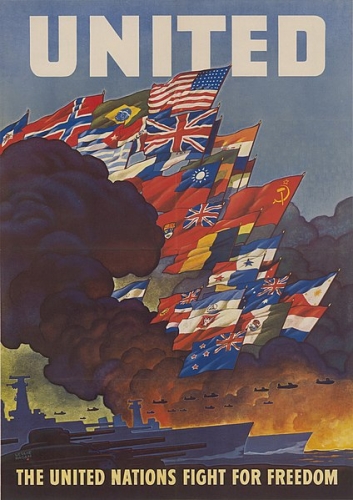
 Au total les définitions de la propagande suggèrent pourtant des conditions minimales :
Au total les définitions de la propagande suggèrent pourtant des conditions minimales : 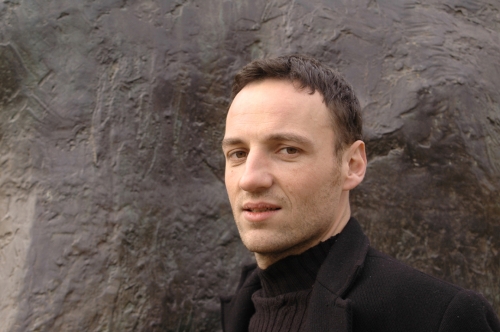

 Que dit le maître à penser de Georges Soros ? En substance, qu’une société ouverte, au contraire d’une société fermée, distingue ce qui relève du droit de ce qui relève de la culture. Le philosophe explique que la société ne doit plus être soudée par des valeurs partagées mais par des lois qui respectent le droit naturel et n’entravent pas le pluralisme des idées ou des croyances. Une société ouverte fondée sur des lois acceptables par tous les hommes peut, et même doit selon Popper, être multiculturelle et multiraciale. En résumé, Popper, inspiré par le républicanisme « français », nous explique que les cultures doivent perdre leur caractère sociétal sous l’effet de lois culturicides. La loi émanant de l’identité doit s’effacer devant une loi abstraite émanant de l’universalité. Le philosophe propose un
Que dit le maître à penser de Georges Soros ? En substance, qu’une société ouverte, au contraire d’une société fermée, distingue ce qui relève du droit de ce qui relève de la culture. Le philosophe explique que la société ne doit plus être soudée par des valeurs partagées mais par des lois qui respectent le droit naturel et n’entravent pas le pluralisme des idées ou des croyances. Une société ouverte fondée sur des lois acceptables par tous les hommes peut, et même doit selon Popper, être multiculturelle et multiraciale. En résumé, Popper, inspiré par le républicanisme « français », nous explique que les cultures doivent perdre leur caractère sociétal sous l’effet de lois culturicides. La loi émanant de l’identité doit s’effacer devant une loi abstraite émanant de l’universalité. Le philosophe propose un 
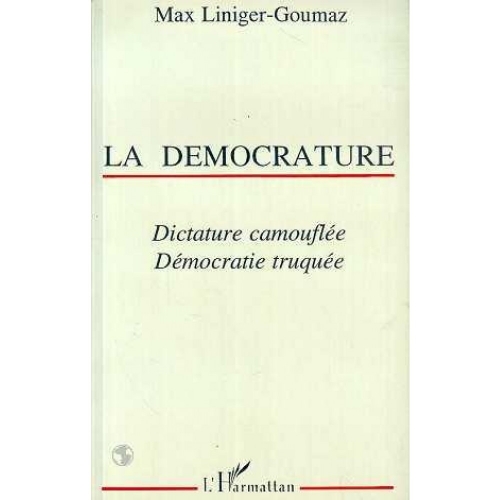







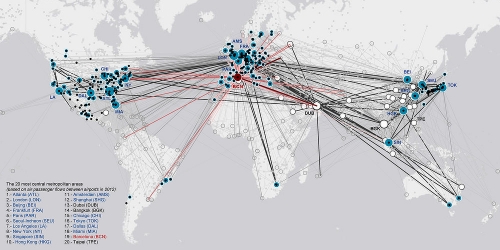
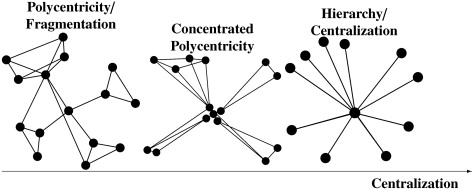


 In his Parmenides, Martin Heidegger contributed an interesting remark in regards to the Greek term “polis”, which once again confirms the importance and necessity of serious etymological analysis. By virtue of its profundity, we shall reproduce this quote in full:
In his Parmenides, Martin Heidegger contributed an interesting remark in regards to the Greek term “polis”, which once again confirms the importance and necessity of serious etymological analysis. By virtue of its profundity, we shall reproduce this quote in full:


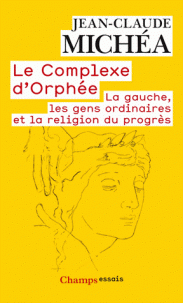 Qu’on puisse avoir des doutes ou des réclamations sur un parti comme le Front National est logique, mais la victoire politique doit s’abstenir d’une réaction similaire à celle qui pourrait avoir lieu à la buvette du coin. D’autant plus dans une situation de fait majoritaire où ce parti doit obtenir 50,1% des voix pour réussir. Et cela, aussi bien pour les présidentielles que pour les législatives.
Qu’on puisse avoir des doutes ou des réclamations sur un parti comme le Front National est logique, mais la victoire politique doit s’abstenir d’une réaction similaire à celle qui pourrait avoir lieu à la buvette du coin. D’autant plus dans une situation de fait majoritaire où ce parti doit obtenir 50,1% des voix pour réussir. Et cela, aussi bien pour les présidentielles que pour les législatives.


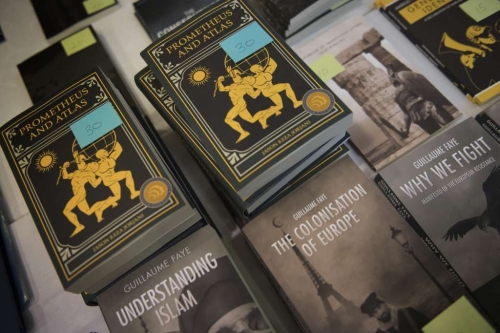



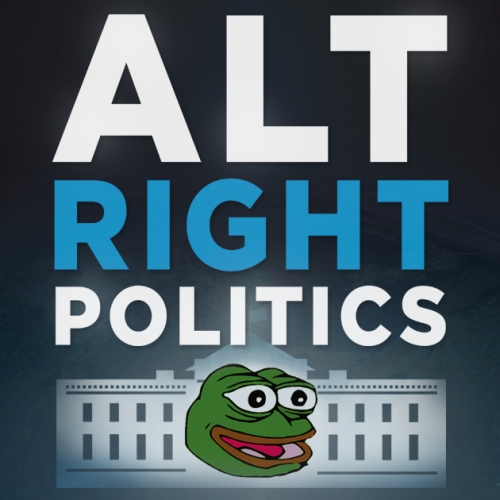
 The Alt-Right broadly defined would be anything on the Right that is in opposition to the neocon-led Republican alliance. This could include everything from many Donald Trump voters in the mainstream, to various tendencies that have been given such labels as the “alt-lite,” the new right, the radical right, the populist right, the dark enlightenment, the identitarians, the neo-reactionaries, the manosphere (or “men’s right advocates”), civic nationalists, economic nationalists, Southern nationalists, white nationalists, paleoconservatives, right-wing anarchists, right-leaning libertarians (or “paleolibertarians”), right-wing socialists, neo-monarchists, tendencies among Catholic or Eastern Orthodox traditionalists, neo-pagans, Satanists, adherents of the European New Right, Duginists, Eurasianists, National-Bolsheviks, conspiracy theorists, and, of course, actually self-identified Fascists and National Socialists. I have encountered all of these perspectives and others in Alt-Right circles.
The Alt-Right broadly defined would be anything on the Right that is in opposition to the neocon-led Republican alliance. This could include everything from many Donald Trump voters in the mainstream, to various tendencies that have been given such labels as the “alt-lite,” the new right, the radical right, the populist right, the dark enlightenment, the identitarians, the neo-reactionaries, the manosphere (or “men’s right advocates”), civic nationalists, economic nationalists, Southern nationalists, white nationalists, paleoconservatives, right-wing anarchists, right-leaning libertarians (or “paleolibertarians”), right-wing socialists, neo-monarchists, tendencies among Catholic or Eastern Orthodox traditionalists, neo-pagans, Satanists, adherents of the European New Right, Duginists, Eurasianists, National-Bolsheviks, conspiracy theorists, and, of course, actually self-identified Fascists and National Socialists. I have encountered all of these perspectives and others in Alt-Right circles.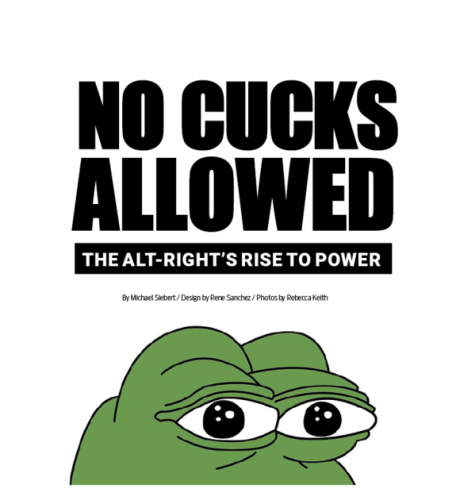

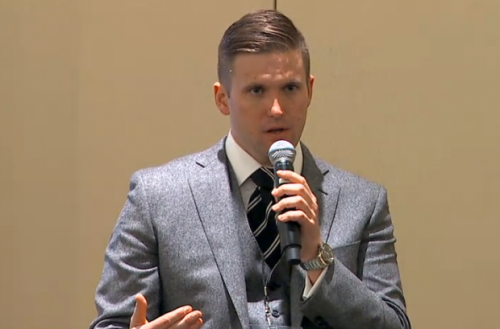
 These comments are fairly representative of the rhetoric used by mainstream conservatives who attempt to either portray the Alt-Right as leftists, or label the Alt-Right as fascists and then claim fascism is really on the Left. The general argument that is made by mainstream conservatives in response to the Alt-Right is that “true” conservatism or the “true” Right is actually veneration for the Enlightenment-influenced ideas found in the Declaration of Independence, veneration of the Founding Fathers, and reverence for the Constitution as a kind of secular Bible. Parallel to these claims is the idea of America as a “propositional nation” that has no roots in any kind of history, culture, or tradition other than just a very vaguely defined “Judeo-Christianity.” This idea of what “conservatism” supposedly is basically amounts to being for so-called “limited government,” so-called “free enterprise,” “individualism,” and various other vaguely defined abstractions, plus policy preferences like a so-called “strong national defense” (which is often just a euphemism for the neoconservatives’ foreign policy agenda), and various center-right policy prescriptions like tax cuts, opposing Obamacare, opposing affirmative action, opposing gun control, opposing abortion, opposing gay marriage, supporting school vouchers, and other ideas we are all familiar with.
These comments are fairly representative of the rhetoric used by mainstream conservatives who attempt to either portray the Alt-Right as leftists, or label the Alt-Right as fascists and then claim fascism is really on the Left. The general argument that is made by mainstream conservatives in response to the Alt-Right is that “true” conservatism or the “true” Right is actually veneration for the Enlightenment-influenced ideas found in the Declaration of Independence, veneration of the Founding Fathers, and reverence for the Constitution as a kind of secular Bible. Parallel to these claims is the idea of America as a “propositional nation” that has no roots in any kind of history, culture, or tradition other than just a very vaguely defined “Judeo-Christianity.” This idea of what “conservatism” supposedly is basically amounts to being for so-called “limited government,” so-called “free enterprise,” “individualism,” and various other vaguely defined abstractions, plus policy preferences like a so-called “strong national defense” (which is often just a euphemism for the neoconservatives’ foreign policy agenda), and various center-right policy prescriptions like tax cuts, opposing Obamacare, opposing affirmative action, opposing gun control, opposing abortion, opposing gay marriage, supporting school vouchers, and other ideas we are all familiar with.
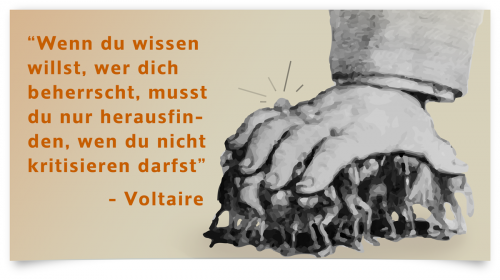
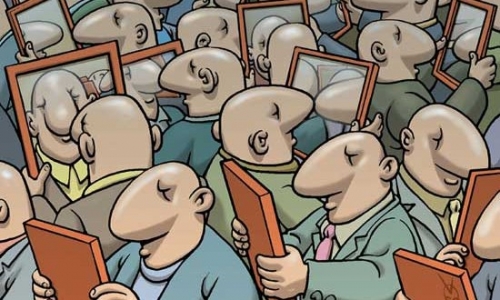






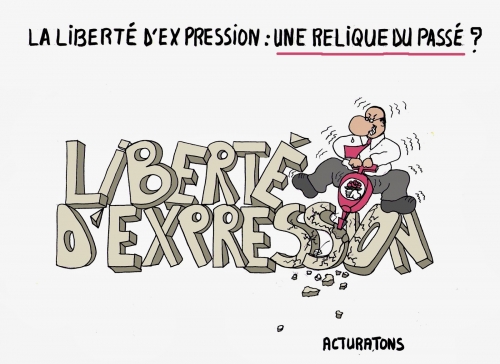

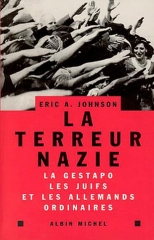 Cette mansuétude, rarement signalée par les historiens, permet d’évoquer une curiosité également « omise » par nombre d’auteurs. L’étude exhaustive des dossiers de la Gestapo rhénane (E. A. Johnson :
Cette mansuétude, rarement signalée par les historiens, permet d’évoquer une curiosité également « omise » par nombre d’auteurs. L’étude exhaustive des dossiers de la Gestapo rhénane (E. A. Johnson : 
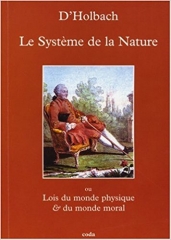 « La liberté est celle de faire, pour son propre bonheur, tout ce qui ne nuit pas aux autres » (Paul-Henri d’Holbach, in
« La liberté est celle de faire, pour son propre bonheur, tout ce qui ne nuit pas aux autres » (Paul-Henri d’Holbach, in 